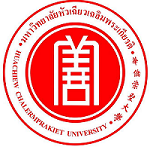Please use this identifier to cite or link to this item:
https://has.hcu.ac.th/jspui/handle/123456789/4678Full metadata record
| DC Field | Value | Language |
|---|---|---|
| dc.contributor.author | 李洁琼 | - |
| dc.contributor.author | Li Jieqiong | - |
| dc.contributor.author | 艾红娟 | - |
| dc.contributor.author | Ai Hongjuan | - |
| dc.contributor.other | Huachiew Chalermprakiet University. College of Chinese Studies. Graduate Student | en |
| dc.contributor.other | Southwest University, P.R. China | en |
| dc.date.accessioned | 2025-10-18T07:59:56Z | - |
| dc.date.available | 2025-10-18T07:59:56Z | - |
| dc.date.issued | 2023 | - |
| dc.identifier.citation | วารสารวิชาการภาษาและวัฒนธรรมจีน 10,2 (กรกฎาคม-ธันวาคม 2566) : 97-111. | en |
| dc.identifier.uri | https://has.hcu.ac.th/jspui/handle/123456789/4678 | - |
| dc.description | สามารถเข้าถึงบทความฉบับเต็ม (Full Text) ได้ที่ : https://so02.tci-thaijo.org/index.php/clcjn/article/view/264432/178325 | en |
| dc.description.abstract | 本文以现代汉语常用词“刀”为例,对比其英语对应词“knife”在英词典中义项分布和释义描写情况,发现英语词典中“knife”字义项数量比汉语词典更多,释义描写更加清晰。可以推测,汉语词典中“刀”的义项存在漏收的情况。因此,本文运用语料库技术,穷尽性地分析了10000条78万余字的“刀”字语料,对“刀”在现代汉语中的义项分布情况做了重新划分和描写,同时运用物性结构理论,深化分析和解释“刀”字各义项的形成原因和衍生关系。最终修改《现汉》中原有的2个义项,新增5个义项,不仅清楚的解释了“刀”字的意义,还细化了“刀”字义项。 | en |
| dc.description.abstract | This article mainly takes Chinese word "刀"(dao)as an example to compare its sense distribution and interpretation in Chinese-English dictionaries. It was found that the number of meanings of the word "knife" in the English dictionary is more than that in the Chinese dictionary, and the definition and description are clearer. From this, it can be inferred that the sense of "刀"(dao)in Chinese dictionaries is missing. Therefore, this paper uses corpus technology to exhaustively analyze 10,000 pieces of "刀"(dao)corpus with more than 780,000 characters, and redescribes the semantic distribution of Chinese words "刀"(dao) in modern Chinese. At the same time, it uses the qualia structure theory to deeply analyze and explain the formation reasons and derivative relationships of the various meanings of the word "刀"(dao). Finally, 2 semantics of the word "knife" were modified, and 5 new semantics of the word "knife" were added, which not only clearly explained the meaning, but also refined the semantic. | en |
| dc.language.iso | zh | en |
| dc.publisher | มหาวิทยาลัยหัวเฉียวเฉลิมพระเกียรติ | en |
| dc.subject | ภาษาจีน -- คำศัพท์ | en |
| dc.subject | Chinese language – Glossaries, vocabularies, etc. | en |
| dc.subject | 汉语 -- 词汇 | en |
| dc.subject | ภาษาจีน -- การใช้ภาษา | en |
| dc.subject | Chinese language – Usage | en |
| dc.subject | 汉语 -- 语言使用 | en |
| dc.subject | ภาษาจีน -- พจนานุกรม | en |
| dc.subject | Chinese language -- Encyclopedias and dictionaries | en |
| dc.subject | 泰语 -- 词典 | en |
| dc.subject | เครื่องมือเครื่องใช้ -- คำศัพท์ | en |
| dc.subject | Implements, utensils, etc. -- Vocabulary | en |
| dc.subject | 工具 -- 词汇 | en |
| dc.subject | Theory of Qualia Structure | en |
| dc.subject | 感质结构理论 | en |
| dc.subject | ภาษาจีน – อรรถศาสตร์ | - |
| dc.subject | Chinese language -- Semantics | - |
| dc.subject | 汉语 -- 语义 | - |
| dc.title | 基于物性结构理论的现代汉语 “刀”字释义研究 | en |
| dc.title.alternative | The Distribution of the Word “刀” (DAO) in Modern Chinese Based on the Qualia Structure Theory | en |
| dc.type | Article | en |
| Appears in Collections: | College Of Chinese Studies - Articles Journals | |
Files in This Item:
| File | Description | Size | Format | |
|---|---|---|---|---|
| The-Distribution-of-the-Word-“刀”-(DAO)-in-Modern-Chinese-Based-on-the-Qualia-Structure.pdf | 190.85 kB | Adobe PDF | View/Open |
Items in DSpace are protected by copyright, with all rights reserved, unless otherwise indicated.
